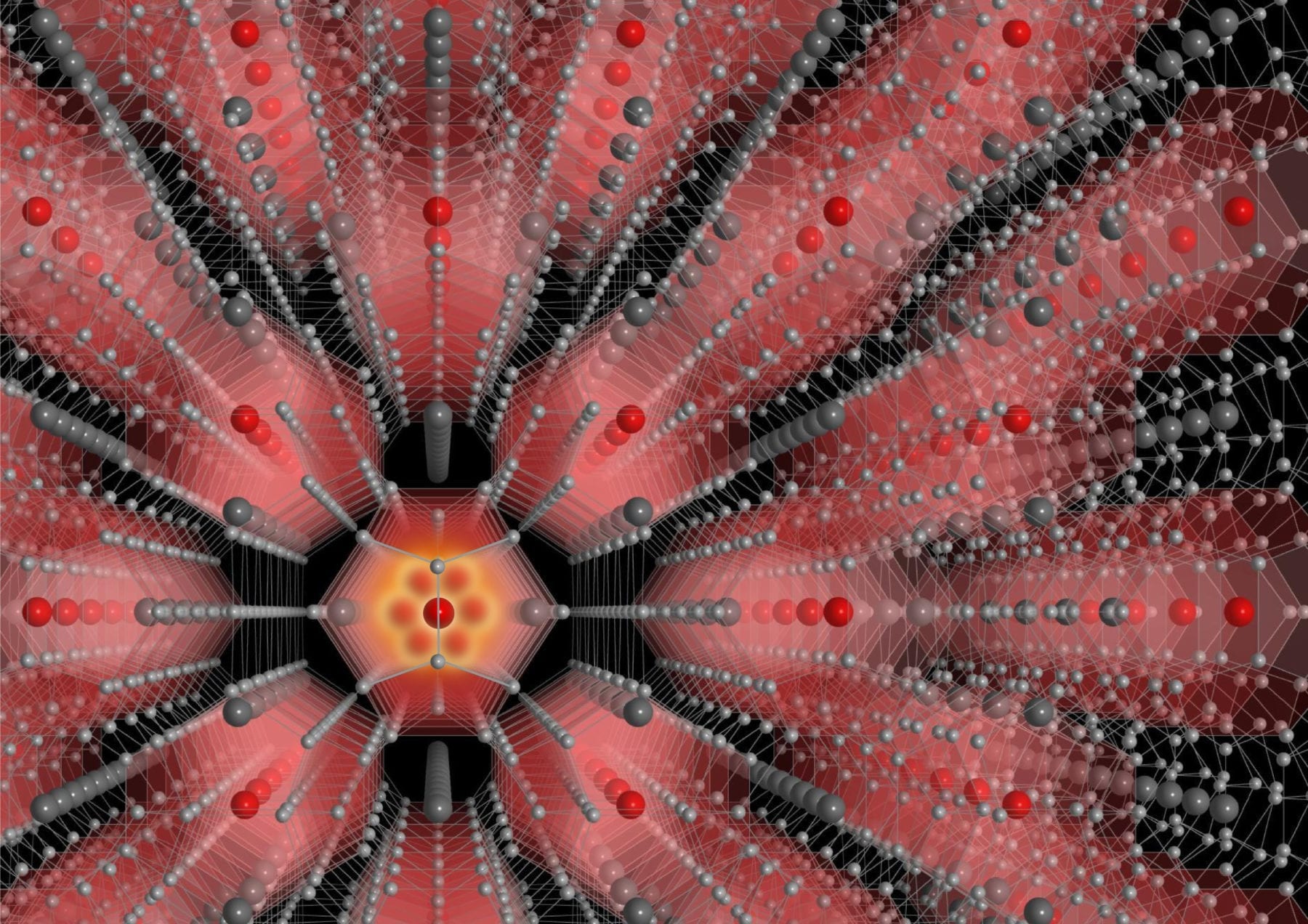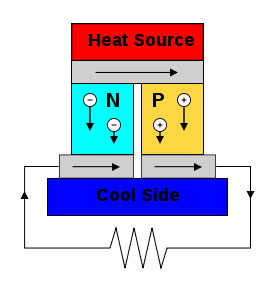
At the Vienna University of Technology, a new class of thermoelectric materials has been discovered.
Due to a surprising physical effect they can be used to create electricity more efficiently.
A lot of energy is wasted when machines turn hot, unnecessarily heating up their environment. Some of this thermal energy could be harvested using thermoelectric materials; they create electric current when they are used to bridge hot and cold objects. At the Vienna University of Technology (TU Vienna), a new and considerably more efficient class of thermoelectric materials can now be produced. It is the material’s very special crystal structure that does the trick, in connection with an astonishing new physical effect; in countless tiny cages within the crystal, cerium atoms are enclosed. These trapped magnetic atoms are constantly rattling the bars of their cage, and this rattling seems to be responsible for the material’s exceptionally favourable properties.
Cerium Cages from the Mirror Oven
“Clathrates” is the technical term for crystals, in which host atoms are enclosed in cage-like spaces. “These clathrates show remarkable thermal properties”, says Professor Silke Bühler-Paschen (TU Vienna). The exact behaviour of the material depends on the interaction between the trapped atoms and the cage surrounding them. “We came up with the idea to trap cerium atoms, because their magnetic properties promised particularly interesting kinds of interaction”, explains Bühler-Paschen.
For a long time, this task seemed impossible. All earlier attempts to incorporate magnetic atoms such as the rare-earth metal cerium into the clathrate structures failed. With the help of a sophisticated crystal growth technique in a mirror oven, Professor Andrey Prokofiev (TU Vienna) has now succeeded in creating clathrates made of barium, silicon and gold, encapsulating single cerium atoms.
Electricity from Temperature Differences
The thermoelectric properties of the novel material have been tested. Thermoelectrics work when they connect something hot with something cold: “The thermal motion of the electrons in the material depends on the temperature”, explains Bühler-Paschen. “On the hot side, there is more thermal motion than on the cold side, so the electrons diffuse towards the colder region. Therefore, a voltage is created between the two sides of the thermoelectric material.”
Experiments show that the cerium atoms increase the material’s thermopower by 50%, so a much higher voltage can be obtained. Furthermore, the thermal conductivity of clathrates is very low. This is also important, because otherwise the temperatures on either side would equilibrate, and no voltage would remain.
The Latest Bing News on:
Thermoelectric materials
- It May be Possible to Power Implantable Generators with Our Bodieson May 3, 2024 at 7:30 am
Researchers are trying to solve the problem of powering implantable devices to help improve and save lives.
- Exploiting disorder to harvest heat energy: The potentialities of 2D magnets for thermoelectric applicationson April 30, 2024 at 9:20 am
Thermoelectric systems are a green and sustainable way to harvest energy from any form of heat that otherwise would be wasted. At the core of this energy conversion process is the so-called Seebeck ...
- Department Thermoelectric Materials and Systemson April 19, 2024 at 3:15 am
For optimal use, thermoelectric (TE) materials and modules must be adapted to the requirements of the system where they are integrated. Depending on the temperature range of the application, a ...
- Researchers develop a thermoelectric material with optimal cost, efficiency and flexibilityon March 29, 2024 at 9:19 am
Despite ongoing research and development on various types of bulk and thin-film thermoelectric materials and devices, owing to the advantages of thermoelectric technology, the chronic issue of ...
- Nanostructuring and moreon March 1, 2024 at 10:27 am
In thermoelectric materials, the application of a temperature gradient generates a voltage, and vice versa. By exploiting this coupling between thermal and electrical properties, devices can be ...
- Thermoelectric Material (IMAGE)on July 15, 2022 at 6:43 am
Disclaimer: AAAS and EurekAlert! are not responsible for the accuracy of news releases posted to EurekAlert! by contributing institutions or for the use of any information through the EurekAlert ...
- An inconvenient truth about thermoelectricson November 30, 2021 at 12:56 pm
In 2006, the US Department of Energy's Office of Basic Energy Sciences initiated support to develop improved thermoelectric materials as part of their solar energy project. The idea is simple ...
- Thermoelectric Paint Opens Prospect Of Easier Energy Harvestingon December 10, 2016 at 3:28 pm
The coating is painted on, but then it must be sintered at high temperature to form the final material. Then since the thermoelectric Seebeck effect voltage generated across a junction is tiny ...
The Latest Google Headlines on:
Thermoelectric materials
[google_news title=”” keyword=”Thermoelectric materials” num_posts=”10″ blurb_length=”0″ show_thumb=”left”]
The Latest Bing News on:
Clathrates
- Méthane - Définitionon May 6, 2024 at 4:59 pm
Les sédiments et océans : 4% des émissions Les hydrates contenant du méthane (clathrates) pourraient émettre du gaz en cas de perturbation de la température océanique et/ou du dégel de certains sols ...
- News tagged with fossil fuelson April 28, 2024 at 5:00 pm
Everything biobased: plastic, medicine, and fuel. It seems like a futuristic utopia. But for how long? A collaboration of researchers now proposes an idea to accelerate the development process. By ...
- Henderson, Las Vegas students place in top three of NASA competitionon April 27, 2024 at 5:08 pm
A Henderson student and Las Vegas student beat out over 1,500 other students to place in the top three of a NASA competition, ...
- News tagged with methaneon July 25, 2020 at 6:25 pm
In a new Journal of Dairy Science study, researchers have increased the quantity and quality of the available data on genetic traits related to feed efficiency and methane emissions The most ...
- Methane Hydrates and Contemporary Climate Changeon January 14, 2020 at 4:02 am
Methane hydrates occur in five geographic settings (or sectors) that must be individually evaluated to determine their susceptibility to warming climate (Figure 1). The percentages assigned to ...
- Towards artificial enzymeson January 3, 2019 at 2:22 am
They are examples of clathrates — molecular crystals that trap a second type of molecule — in this case, solvent. In these zinc phthalocyanine arrays, the clathrates were held together solely ...
The Latest Google Headlines on:
Clathrates
[google_news title=”” keyword=”clathrates” num_posts=”10″ blurb_length=”0″ show_thumb=”left”]










